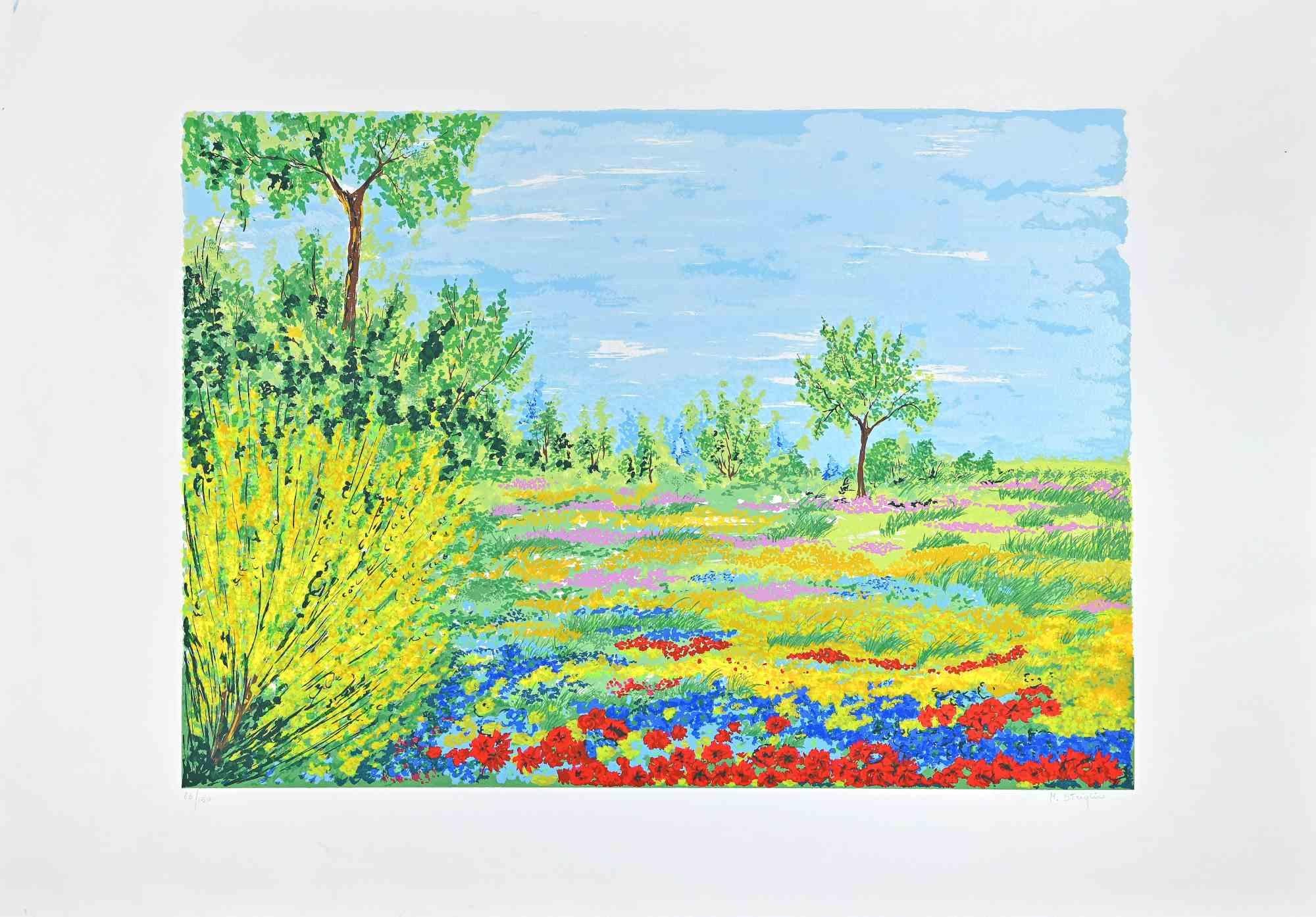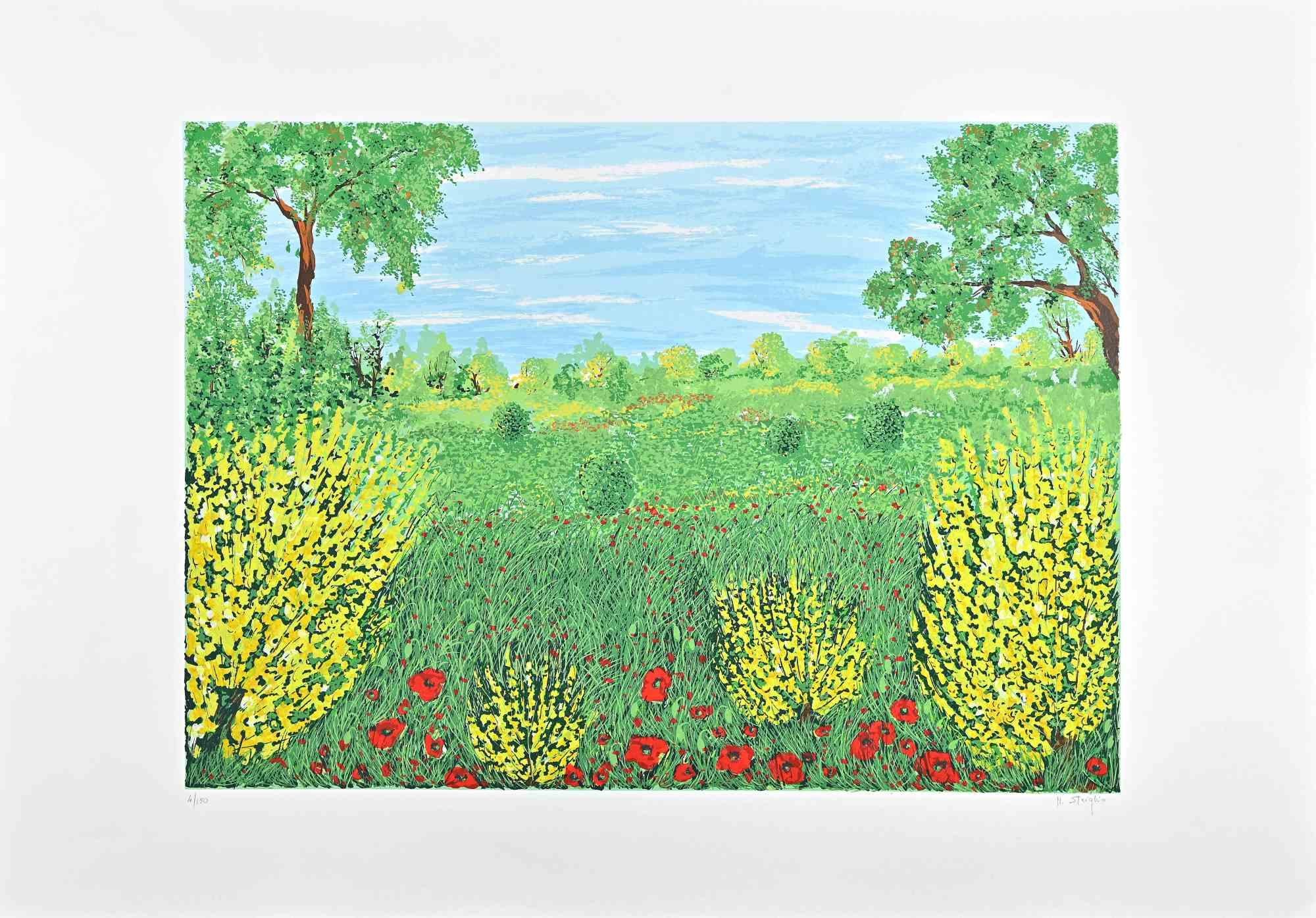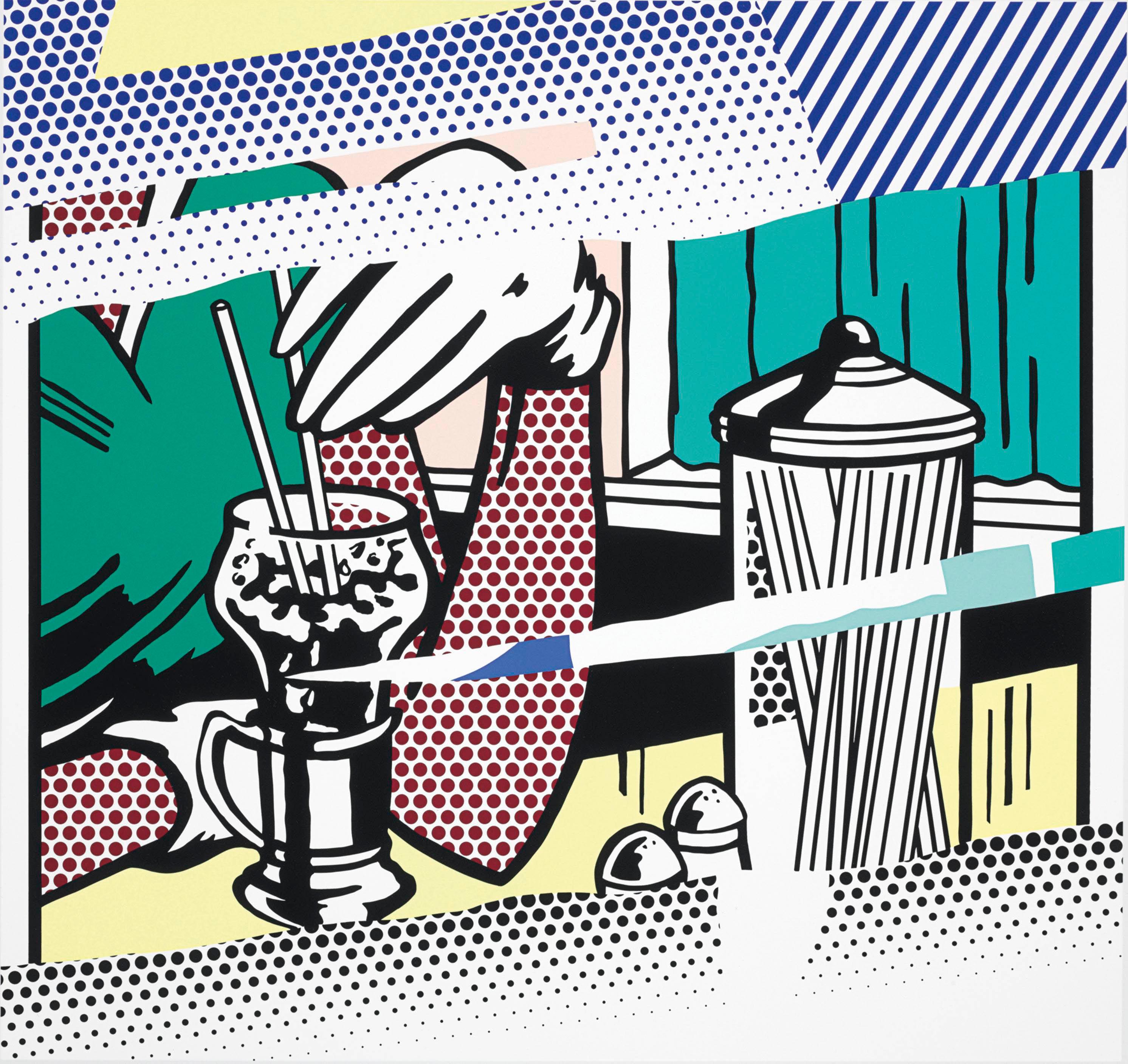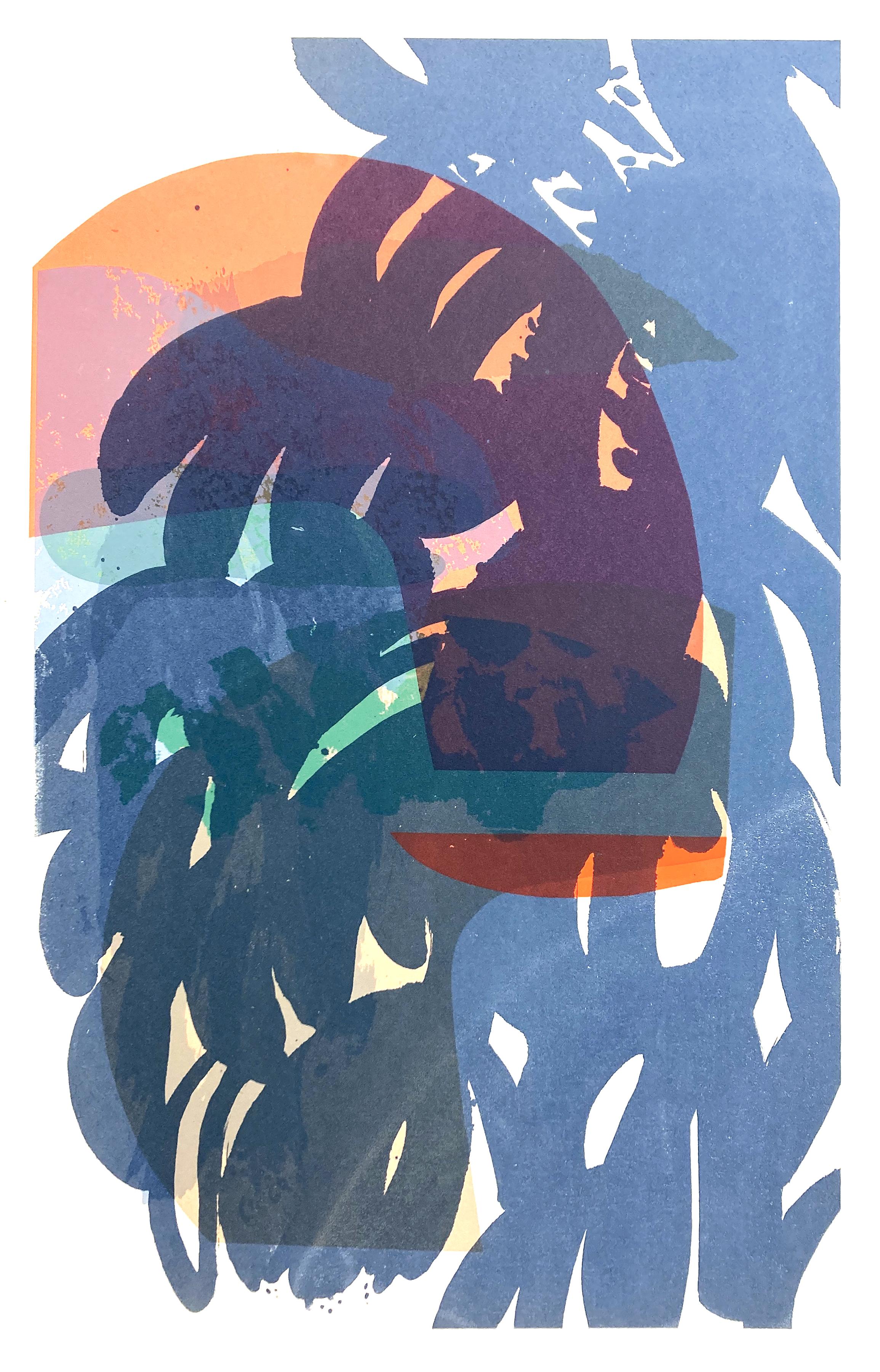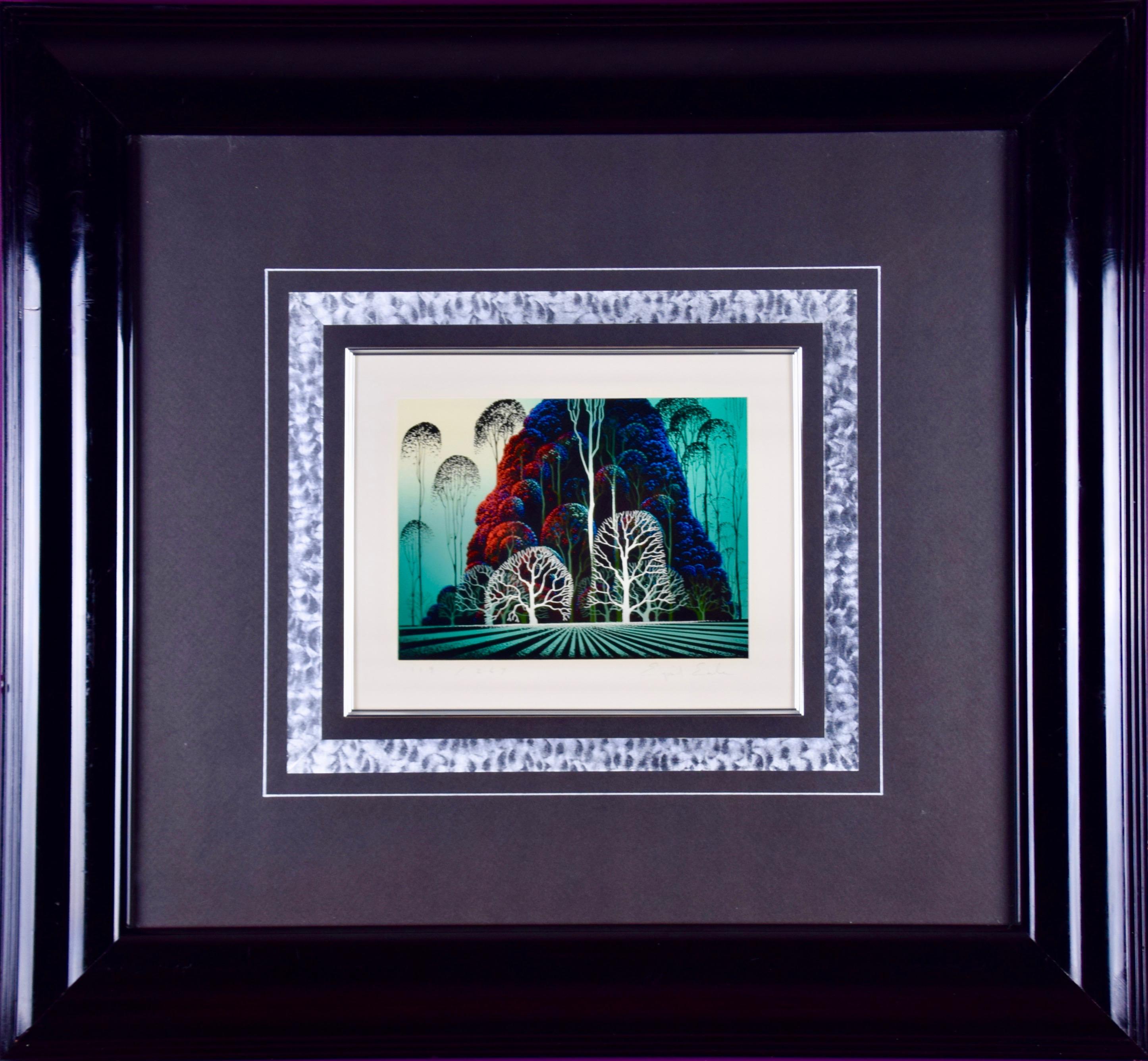Items Similar to Marine Landscape - Screen Print by Livio De Morvan - 20th Century
Want more images or videos?
Request additional images or videos from the seller
1 of 2
Livio De MorvanMarine Landscape - Screen Print by Livio De Morvan - 20th Century20th Century
20th Century
About the Item
Marine Landscape is a splendid screen print realized by Livio De Morvan.
The state of preservation of the artwork is excellent.
Sheet Dimension: 19 x 24 cm
This original serigraph represents a sublime marine landscape, with vivid colors.
Hand-signed on the lower right. Not numbered.
- Creator:
- Creation Year:20th Century
- Dimensions:Height: 7.49 in (19 cm)Width: 9.45 in (24 cm)Depth: 0.04 in (1 mm)
- Medium:
- Period:
- Framing:Framing Options Available
- Condition:Insurance may be requested by customers as additional service, contact us for more information.
- Gallery Location:Roma, IT
- Reference Number:
About the Seller
4.9
Platinum Seller
These expertly vetted sellers are 1stDibs' most experienced sellers and are rated highest by our customers.
1stDibs seller since 2017
6,768 sales on 1stDibs
Typical response time: 3 hours
- ShippingRetrieving quote...Ships From: Grasse, France
- Return PolicyA return for this item may be initiated within 14 days of delivery.
More From This SellerView All
- The City - Screen Print by Giuseppe Aleandro - 1980sLocated in Roma, ITThe City is a screen print realized by Giuseppe Aleandro in the 1980s. Hand-signed and numbered. Edition of 150 prints. Very Good condition.Category
1970s Contemporary Figurative Prints
MaterialsScreen
- Explosive Spring -Original ScreenPrint by Maddalena Striglio - Late 20th centuryLocated in Roma, ITExplosive Spring is a very brightly colored screen print realized by the contemporary Italian artist Maddalena Striglio in the late 20th Century. ...Category
Late 20th Century Modern Landscape Prints
MaterialsScreen
- Spring - Original Screen Print by Maddalena Striglio - Late 20th centuryLocated in Roma, ITThe Spring is a very brightly colored serigraph realized by the contemporary Italian artist Maddalena Striglio in the late 20th Century. Hand-sign...Category
Late 20th Century Contemporary Figurative Prints
MaterialsScreen
- Landscapes of Autumn - Screen Print by Rolandi - 1980sBy Rolandi (Maurizio Coccia)Located in Roma, ITLandscapes Of Autumn is a modern artwork realized by the painter Rolandi, in the 1980s. Mixed colored screen print. Hand signed on the lower right margin. Artist's proof (as reported on the lower left margin) Dry stamp on the lower margin. Maurizio Coccia, also known as "Rolandi" painter, engraver, sculptor, artistic decorator. Born in Rome in 1940, he studied painting and turned to the masters of the Via Margutta and was inspired by the works of Cagli and Guttuso. After making his debut in the 70s with two exhibitions in Trieste and Rieti, he also exhibits in the United States and in the major Italian galleries...Category
1980s Contemporary Figurative Prints
MaterialsScreen
- Trinità dei Monti - Original Screen Print by Carlo Mazzoni - Late 20th CenturyBy Carlo MazzoniLocated in Roma, ITTrinità dei Monti is an original screen print realized by Carlo Mazzoni. Hand-signed by the artist in pencil on the lower right corner. Edition 19/60 Good conditions. This artwo...Category
Late 20th Century Figurative Prints
MaterialsScreen, Paper
- My Retreat - Screen Print by Maddalena Striglio - Late 20th centuryLocated in Roma, ITMy Retreat is a very brightly colored screen print realized by the contemporary Italian artist Maddalena Striglio in the late 20th Century. Hand-s...Category
Late 20th Century Modern Landscape Prints
MaterialsScreen
You May Also Like
- REFLECTIONS ON SODA FOUNTAINBy Roy LichtensteinLocated in Aventura, FLHand signed, numbered and dated in pencil. Screenprint in colors, on Rives BFK. (C. 257; G. 1498). Co-published by the artist and Gemini G.E.L., Los Angeles, with their blindstamps a...Category
1990s Pop Art Figurative Prints
MaterialsPaper, Screen
- BRUSHWOOD - Modern Plants Unique Screen Printing 1/1 , Joyful, ColorfulBy Anna ŁadeckaLocated in Salzburg, ATUnique Screen Printing 1/1, signed by artist. Anna Ładecka is a Paris-based polish illustrator and painter. Graduated from Warsaw Academy of Fine Arts, Master of Art - Diploma in p...Category
2010s Contemporary Landscape Prints
MaterialsScreen, Archival Paper
- Eyvind Earle Contemporary Serigraph "Eucalyptus Forest"By Eyvind EarleLocated in Alamo, CAThis striking contemporary abstract serigraph by Eyvind Earle (1916-2000) is entitled "Eucalyptus Forest". It depicts a stylized scene of cloud like trees with a radiating pattern in the foreground, possibly tilled fields. It is signed in pencil in the lower right and numbered in pencil 119/267 in the lower left. This colorful print is presented in a glossy black wood frame with a French mat...Category
Late 20th Century Contemporary Landscape Prints
MaterialsScreen
- Modernist Silkscreen Screenprint 'El Station, Interior' NYC Subway, WPA ArtistBy Anthony VelonisLocated in Surfside, FLscreenprint printed in color ink on wove paper. New York City subway station interior. Anthony Velonis (1911 – 1997) was an American painter and designer born in New York City who helped introduce the public to silkscreen printing in the early 20th century. While employed under the federal Works Progress Administration, WPA during the Great Depression, Velonis brought the use of silkscreen printing as a fine art form, referred to as the "serigraph," into the mainstream. By his own request, he was not publicly credited for coining the term. He experimented and mastered techniques to print on a wide variety of materials, such as glass, plastics, and metal, thereby expanding the field. In the mid to late 20th century, the silkscreen technique became popular among other artists such as Robert Rauschenberg and Andy Warhol. Velonis was born into a relatively poor background of a Greek immigrant family and grew up in the tenements of New York City. Early on, he took creative inspiration from figures in his life such as his grandfather, an immigrant from the mountains in Greece, who was "an ecclesiastical painter, on Byzantine style." Velonis attended James Monroe High School in The Bronx, where he took on minor artistic roles such as the illustration of his high school yearbook. He eventually received a scholarship to the NYU College of Fine Arts, into which he was both surprised and ecstatic to have been admitted. Around this time he took to painting, watercolor, and sculpture, as well as various other art forms, hoping to find a niche that fit. He attended NYU until 1929, when the Great Depression started in the United States after the stock market crash. Around the year 1932, Velonis became interested in silk screen, together with fellow artist Fritz Brosius, and decided to investigate the practice. Working in his brother's sign shop, Velonis was able to master the silkscreen process. He reminisced in an interview three decades later that doing so was "plenty of fun," and that a lot of technology can be discovered through hard work, more so if it is worked on "little by little." Velonis was hired by Mayor LaGuardia in 1934 to promote the work of New York's city government via posters publicizing city projects. One such project required him to go on a commercial fishing trip to locations including New Bedford and Nantucket for a fortnight, where he primarily took photographs and notes, and made sketches. Afterward, for a period of roughly six months, he was occupied with creating paintings from these records. During this trip, Velonis developed true respect and affinity for the fishermen with whom he traveled, "the relatively uneducated person," in his words. Following this, Velonis began work with the Public Works of Art Project (PWAP), an offshoot of the Civil Works Administration (CWA), where he was assigned to serve the different city departments of New York. After the formation of the federal Works Progress Administration, which hired artists and sponsored projects in the arts, he also worked in theater. Velonis began working for the federal WPA in 1935. He kept this position until 1936 or 1938, at which point he began working in the graphic art division of the Federal Art Project, which he ultimately led. Under various elements of the WPA program, many young artists, writers and actors gained employment that helped them survive during the Depression, as well as contributing works that created an artistic legacy for the country. When interviewed in December 1994 by the Library of Congress about his time in the WPA, Velonis reflected that he had greatly enjoyed that period, saying that he liked the "excitement" and "meeting all the other artists with different points of view." He also said in a later interview that "the contact and the dialogue with all those artists and the work that took place was just invaluable." Among the young artists he hired was Edmond Casarella, who later developed an innovative technique using layered cardboard for woodcuts. Velonis introduced silkscreen printing to the Poster Division of the WPA. As he recalled in a 1965 interview: "I suggested that the Poster division would be a lot more productive and useful if they had an auxiliary screen printing project that worked along with them. And apparently this was very favorably received..." As a member of the Federal Art Project, a subdivision of the WPA, Velonis later approached the Public Use of Arts Committee (PUAC) for help in "propagandizing for art in the parks, in the subways, et cetera." Since the Federal Art Project could not be "self-promoting," an outside organization was required to advertise their art more extensively. During his employment with the Federal Art Project, Velonis created nine silkscreen posters for the federal government. Around 1937-1939 Velonis wrote a pamphlet titled "Technical Problems of the Artist: Technique of the Silkscreen Process," which was distributed to art centers run by the WPA around the country. It was considered very influential in encouraging artists to try this relatively inexpensive technique and stimulated printmaking across the country. In 1939, Velonis founded the Creative Printmakers Group, along with three others, including Hyman Warsager. They printed both their own works and those of other artists in their facility. This was considered the most important silkscreen shop of the period. The next year, Velonis founded the National Serigraph Society. It started out with relatively small commercial projects, such as "rather fancy" Christmas cards that were sold to many of the upscale Fifth Avenue shops...Category
1980s American Modern Figurative Prints
MaterialsScreen
- Blimpie, America's Best Dressed Sandwich Pop Art Photo Realist Silkscreen LithoBy Charles FordLocated in Surfside, FLCharles Ford, American Photo Realist Pop Artist Texas Artist Photorealism is a movement which began in the late 1960's, in which scenes are painted in a style closely resembling phot...Category
20th Century Photorealist Landscape Prints
MaterialsScreen
- Prevalence of Ritual, Portfolio of Screenprints by Romare BeardenBy Romare BeardenLocated in Long Island City, NYThe complete portfolio of Romare Bearden's "Prevalence of Ritual" suite. In 1969, the Art Workers Coalition (AWC) submitted a list of demands to MoMA in New York. Included in this li...Category
1970s Figurative Prints
MaterialsScreen
Recently Viewed
View AllMore Ways To Browse
Contemporary Black Japanese Wall Sculpture
Retro Party Poster
Vintage Concert Poster Art
Vintage Matisse Print
50s Illustration Art
Grand Dame
Framed 19th Century French Fashion
New York City Vintage Poster
Nude Figure Plate
Vintage Beach Graphic
Vintage Concert Posters Art Posters
Church Bell Used
Miro Art Exhibition Poster
J W Thomas
Smiling Flower Artist
Vintage French Opera Glasses
Retro Framed American Flag
Swiss Graphic Design Poster
